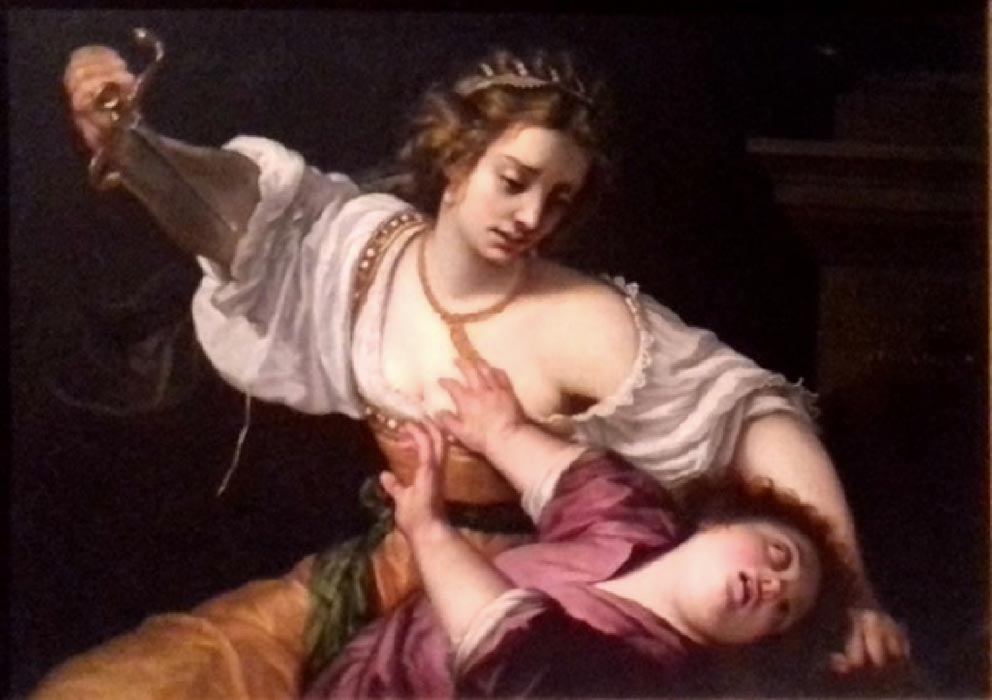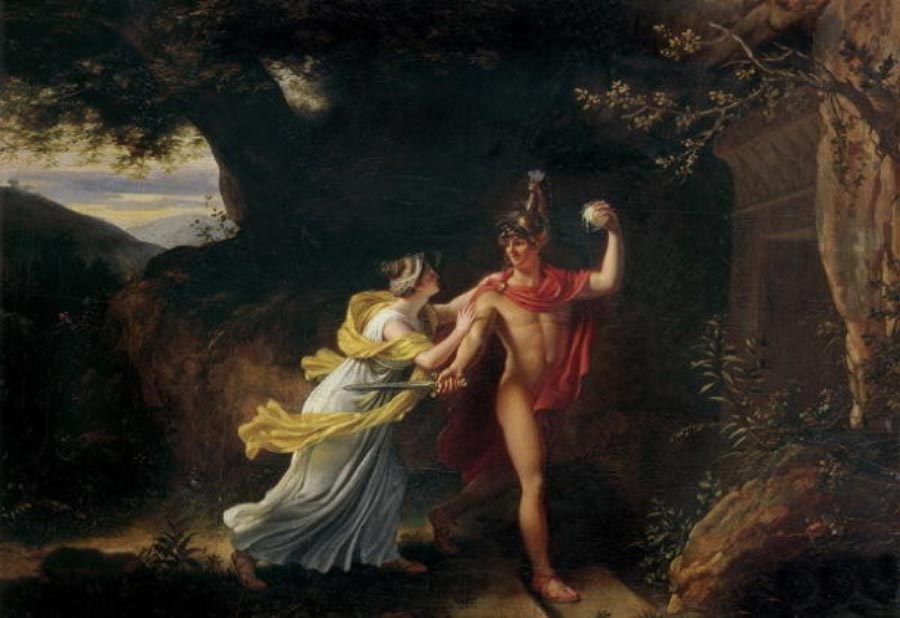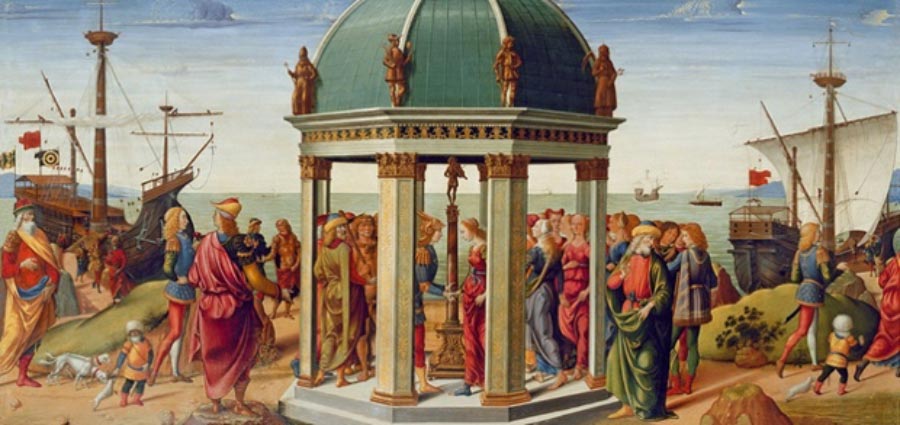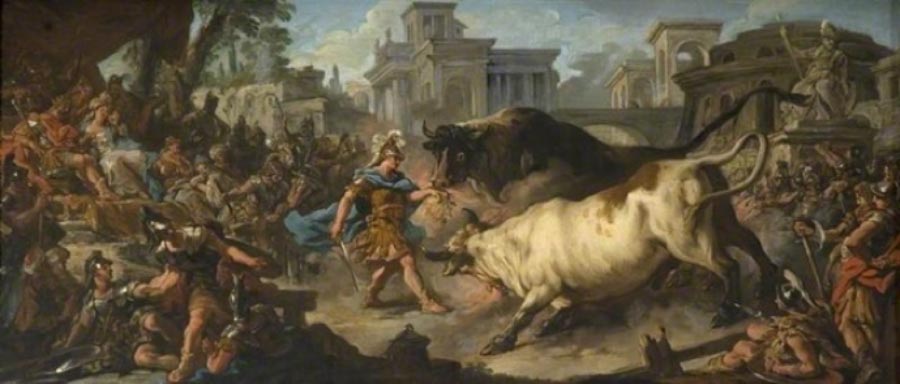
Medea, Murderous Mother or Defiant Defender of the Oikos?
In his Argonautica, ancient Greek author Apollonius of Rhodes provides a rather romantic introduction of Medea as a young woman desperately in love. Unfortunately, this introduction quickly takes on a sinister turn and casts Medea as one of the most infamous and controversial figures in Greek mythology.

Ariadne and Theseus by Jean Baptiste Regnault (1754 – 1829) Musee des Beaux-Arts, Rouen (Public Domain)
Helper Maidens
To understand how a young girl in love can turn into a murderous woman who commits infanticide, it is helpful to look at the women who, over time, have been relegated to the role of ‘helper maidens’ in ancient heroic stories. A helper-maiden is typically personified as a young woman who, usually because of love, helps a hero in his quest. One of them is Ariadne. Ariadne was a priestess-princess and daughter of King Minos of Crete. Her father ordered the creation of a labyrinth by the engineer Daedalus. In the center of this labyrinth lived the Minotaur, half-human and half-bull and Ariadne’s half-brother. Ariadne fell in love with the young hero Theseus, a prince from Athens, who planned to enter the maze, to slay the Minotaur. Before Theseus entered the maze, Ariadne gave him a ball of string to help him find his way out.
After Theseus had killed the Minotaur and escaped from the maze, he took Ariadne as his bride and they sailed back to his home, Athens. However, before reaching their destination, they stopped over at the island of Naxos. Fatigued, Ariadne fell asleep and was then left on the island Naxos by Theseus. Thus, the powerful woman who helped the hero and sacrificed her own family was reduced to a state of powerlessness.

The Betrothal of Jason and Medea by Biagio d’Antonio (1487) Museé des Arts Décoratifs, Paris (Public Domain)
The Exile of Medea
Another helper maiden whose story has a tragic outcome, is Medea. Medea stepped onto the stage when the hero Jason came to Colchis to claim his inheritance - the throne of Iolcus - by retrieving the Golden Fleece, to fulfill one of the conditions tasked to him by his uncle King Pelias. Medea fell in love with the handsome hero and promised to help him on condition that Jason would marry her and take her with him on his adventures. Aeëtes, the king of Colchis and Medea’s father, promised to give Jason the fleece if Jason could perform certain tasks. Jason’s first task was to plough a field with fire-breathing oxen that he had to yoke himself. To help him with this task, Medea gave him an ointment to apply on himself and weapons to protect him from the bulls' fiery breath.
Jason’s second task was to sow the teeth of a dragon in the field. The dragon’s teeth sprouted into an army of warriors. This came as no surprise to Jason as Medea had already prewarned him about this and advised him to throw a rock into the crowd of warriors. Unable to determine where the rock had come from, the warriors attacked and killed each other.





